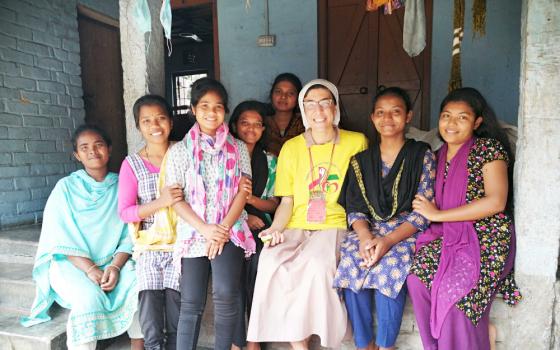The roots of the boiling conflict between U.S. Catholic sisters and the Vatican can be understood, I think, as an unfortunate assault by advocates of one image of the church on the proponents of another image. It is a case of outright ecclesiastical bullying, I believe.
In his classic book, Models of the Church, the late Avery Dulles proposes five legitimate ways of viewing the Catholic church: as institution, as community, as sacrament, as herald or proclaimer of the good news, and as servant. When asked what comes to mind when the word "church" enters a discussion, many Catholics immediately choose institution -- church as organization founded by Christ and directed through the centuries by popes and bishops who have divine authority to teach, sanctify and rule the faithful. It's what was handed down, preached, put into catechisms and memorized for ages. But other models are not of lesser value, Dulles says. They express other aspects of the church that church as institution does not express.
Among these others, the idea of church as servant is most intriguing and perhaps the most powerful because its practitioners mirror precisely what Jesus did in his public ministry. It is also the only one of Dulles' models in which the agenda, the object of its activity, is not set and determined by the church itself, but by the needs of human beings, especially the poor and suffering.
The one group within Catholicism that best personifies church as servant is women religious. Their history in the United States has been one of serving needs -- for many decades as teachers and nurses, but now especially meeting the needs of immigrants, the jobless, the homeless and the poorest of the poor. That's the kind of work sisters do. And since they are in touch with so many of society's outsiders, they are better able to see and articulate how and why official, definitive church doctrine needs to be restudied and re-evaluated in the light of new information and new experiences in our day.
Dulles says that is precisely what Vatican II's Pastoral Constitution on the Church in the Modern World is all about: "It outlines a completely new understanding of the relationship between the Church and the World of our day ... ; it recognizes the legitimate autonomy of human culture and especially of the sciences ... ; it asserts the Church should consider itself as part of the total human family, sharing the same concerns as the rest."
Now comes the Vatican, the quintessential church as institution, demanding that the Leadership Conference of Women Religious submit to reorganization directed by three male bishops, who are well-versed in and vocationally dedicated to the institutional model. The purpose is to somehow shift the sisters' agenda, to bring it more into line with the institution's current agenda (read here: birth control, gay issues and other pelvic concerns). Dulles says the models of church he discusses should never be seen as mutually opposed to one another. I think he must be spinning in his grave as he observes from a distance this frontal attempt of one model to dominate another. Such a heavy-handed use of authority has to be repugnant to anyone who believes in fairness, and this is one reason the investigation is encountering so much criticism and opposition from both Catholic and non-Catholic sources. Each model ought to complement, not control or define the others No one body, not even the Vatican, has an exclusive patent on how the church, guided by the Spirit, shall express itself.



